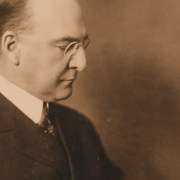1920 in Business History: “Cooperative Capitalism”
The year 1920 marked the emergence of decentralized management, which enabled large, capital intensive firms to succeed for the rest of the century. But every company was not a GM or a DuPont. There were other businesses in mining, textiles, and construction, for example, which sought to remain efficient and competitive while operating on a smaller scale. For industries such as these came another transformative moment at almost exactly the same time, the establishment of “cooperative capitalism.”
As with decentralized management, the context was created by World War I. When the United States entered the war, the Federal Government immediately sought to boost the nation’s productive capacity to its most efficient level. One step was encouraging, through the United States Chamber of Commerce, the creation of trade associations so that every industry could speak with one voice in Washington, and most importantly, so that Washington could get members of every industry to cooperate. To ensure that competitors were not working at cross purposes, the government even suspended antitrust laws for a time allowing businesses to set industry standard prices. All worked closely with the government’s War Industries Board.
At the close of the war the Chamber of Commerce hoped to keep this comfortable arrangement intact. Price fixing in peacetime was beyond the pale for most senators and congressmen, but legislators had no problem with industry cooperation, so long as competition was protected. The extent to which they would continue to work with the government had yet to be determined.
Then, in 1920 Warren Harding was elected president. He chose Herbert Hoover as his Secretary of Commerce. It is imperative to forget what we think we know now about Hoover to understand his importance at the time. Before the United States entered the war, the globe-trotting mining engineer had, on his own, orchestrated a system of public/private relief for Europeans displaced by the conflict. After 1917 he continued to work effectively as Food Administrator for the United States.
Hoover firmly believed, and had seemingly proven, that working together, business and government could serve the general welfare yet still preserve competitive individualism. When Hoover took over as Secretary of Commerce the nation was reeling from the recession that had begun in mid-1920. He began turning what had previously been a collection of relatively unimportant bureaus into a powerful administrative apparatus that would help business survive and thrive.
Hoover’s Department of Commerce began systematically collecting and disseminating the kind of information previously available only to the largest businesses—data on raw materials, production costs, and markets. Next, the government began working closely with new trade associations such as the Associated General Contractors of America to develop priorities and objectives much as it had done during the war. This did, to some extent enable smaller firms to operate efficiently and compete effectively. Events of 1929, however, brought the demise of Hoover’s vision of “cooperative capitalism,” although the structures established in 1920, an effective Department of Commerce and strong industry-wide trade associations, endure.



 Public
Public


